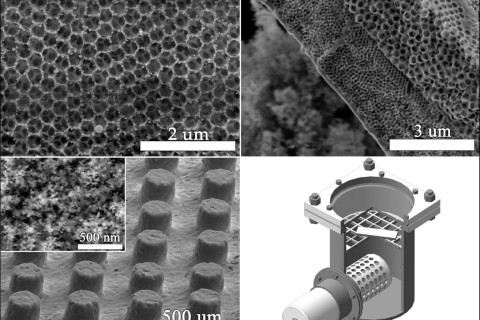Global warming is considered one of the major threats in the 21st century. It may result in irreversible changes in climate and life on the planet. The main contributor to global warming is CO2 and since the late 19th century, the CO2 concentration in the atmosphere has exceeded 400 ppm level that is unprecedented during the measurement history of over 800 000 years. Therefore, there is an urgent demand for the reduction of CO2 in the atmosphere to prevent an uncontrolled rise in the planet's temperature.
To overcome this issue, a new approach to reduce CO2 is required. Inspired by natural photosynthesis, where CO2 and H2O convert to glucose and oxygen under solar irradiation, a similar strategy for the artificial reduction of CO2 by converting it to valuable chemicals (such as solar fuels) has been studied. As a result, the photocatalytic reduction of CO2 and H2O on TiO2 was achieved. However, the photocatalytic activity of pristine TiO2 is rather poor, and therefore, new strategies for improvement are needed.
The aim of the doctoral dissertation of MSc Filipp Temerov was to prepare TiO2 based inverse opal nanostructures with noble metal nanoparticles having improved photocatalytic activity.
In the beginning, a new method for gas-phase photocatalytic activity evaluation was developed based on the decomposition of organic molecules such as acetylene. The earlier methods for photocatalytic activity evaluation have several key drawbacks, and therefore new method was needed for a more reliable and reproducible characterization.
Three types of TiO2 based nanostructures have been prepared and characterized: TiO2 inverse opal (IO) structure with gold, silver, and gold/silver nanoparticles (AuNPs, AgNPs, and Au/AgNPs), multilayer TiO2 IO structure with AuNPs, and TiO2 IO structure with AgNPs deposited by liquid flame spray method. The improved gas-phase photocatalytic activity was obtained upon deposition of MeNPs in all fabricated nanocomposites. The produced TiO2 based nanostructures allow a more effective solar energy conversion, leading to efficient reduction of CO2 in the atmosphere by transformation into solar fuels and further substitution of the current fossil fuel-based economy into a more sustainable solar economy, promoting both economically and ecologically sustainable development.
The doctoral dissertation of MSc Filipp Temerov, entitled Improved photocatalytic activity of TiO2 inverse opal nanostructures will be examined at the Faculty of Science and Forestry on the 19th of February 2021 at 12.15 PM online. The opponent in the public examination will be Professor Tapio Fabritius, University of Oulu, and the custos will be Associate Professor Jarkko J. Saarinen, University of Eastern Finland. The public examination will be held in English.


